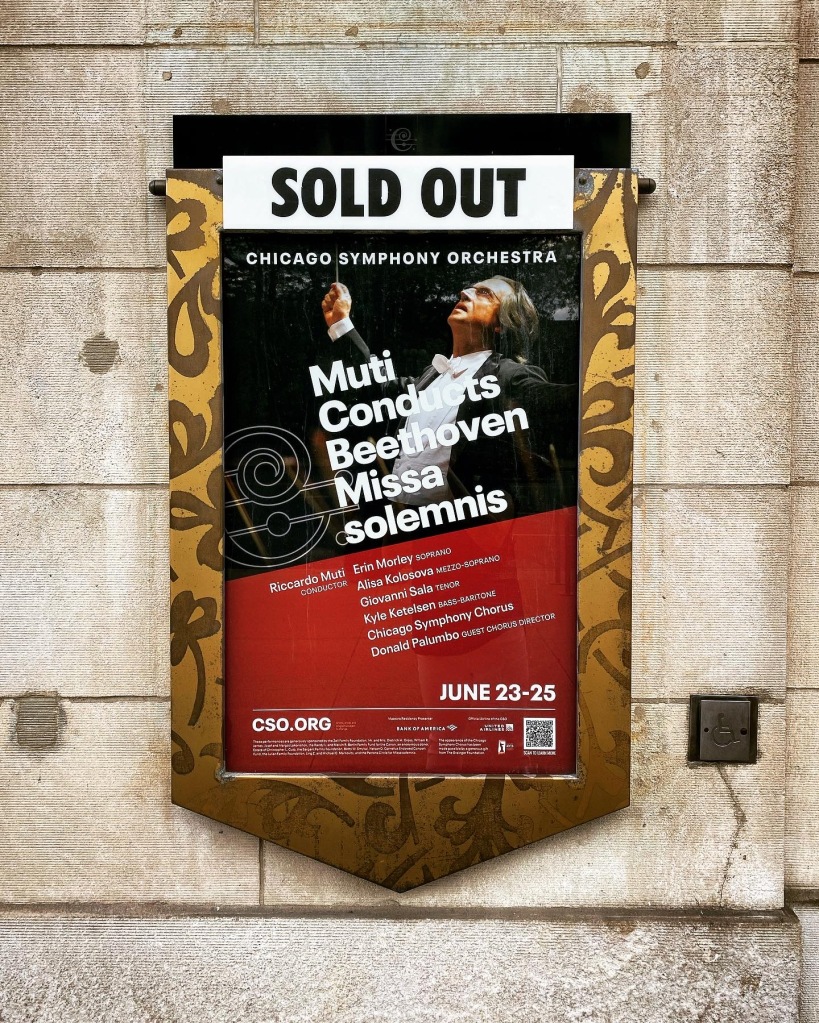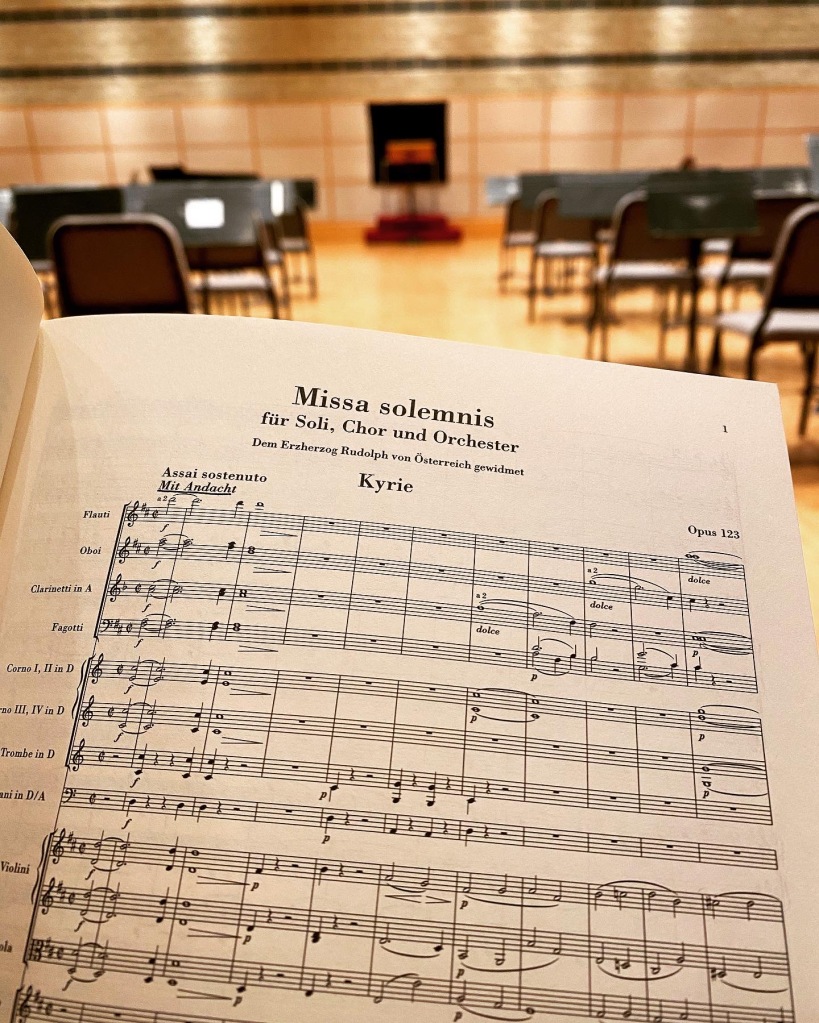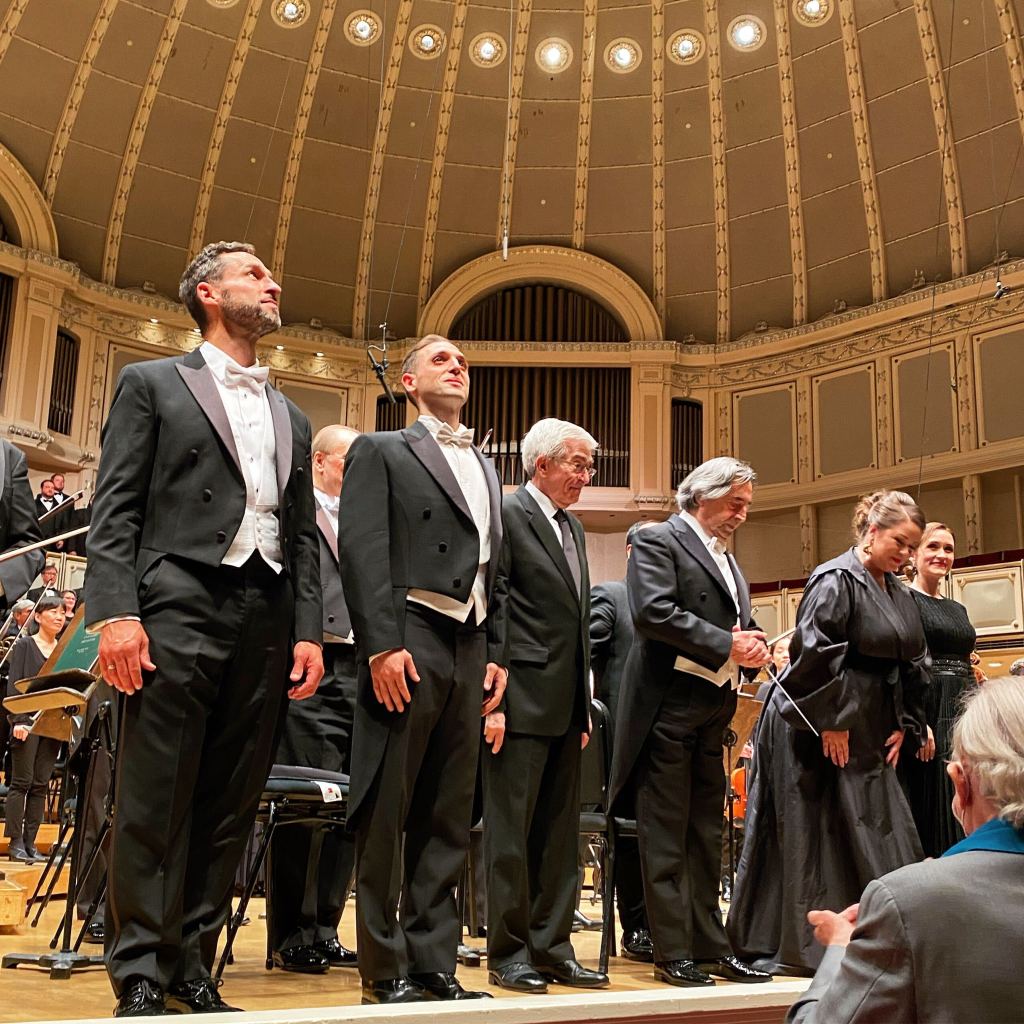
What should have been the conclusion of the Beethoven 250th anniversary celebration in 2020 was moved to this past week—the final week of the CSO’s ’22-’23 subscription concert season—featuring Beethoven’s crowning masterpiece, the Missa Solemnis. And indeed, what a way to end this season.
Throughout the past few years—partly due to the 250th anniversary—Beethoven’s music (especially the 9 symphonies) has permeated the facets of my daily life. It isn’t all that uncommon to find myself listening to the 1st movement of Eroica, or the 3rd movement of the 9th, or the finale of the Pastorale. However, a piece that I hadn’t really gotten to listening to was the Missa…because of its extremely deep complexities, I wanted to wait until Maestro Muti was going to lead the work here in Chicago, as learning from him would undoubtedly open up this massive and enigmatic work for me.

One of the ways that Maestro Muti describes the Missa is that the work is “the Sistine Chapel of music.” Luckily, I’ve been fortunate to have had the opportunity to gaze up and marvel at the magnificent frescoes of Michelangelo in that famed chapel of Vatican City, and I do have to say that La Cappella Sistina is definitely an apt analog for conveying the unique characteristics of the Missa. There are just so many different moments in this work that set the Missa apart not only from the rest of Beethoven’s oeuvre, but also from liturgical/sacred music in general. From the vast opening upbeat of the Kyrie (which is typically a downbeat in most musical settings), to the highly intricate fugues and counterpoint in the Gloria/Credo, to the grave solemnity of the Praeludium of the Sanctus—which leads into one of the most beautiful violin solos in the Benedictus—and finally to the dramatic tension and desperate, though uncertain, pleas—for “pacem” (“peace”) in the concluding Agnus Dei. And one of the aspects of the Missa that Maestro Muti always highlights is how Beethoven includes an “O!” in front of “miserere”, which isn’t in the original liturgical text, illustrating Beethoven’s deeper expression of mankind’s suffering.

The Missa also features some of the most difficult vocal music ever written, which makes performing this piece a significant challenge for the chorus and soloists. And speaking of the soloists, it was fantastic to hear Giovanni Sala again, as I had previously heard him sing a brilliant Don Ottavio (his “Dalla sua pace” was sublime) in last year’s performances of Mozart’s Don Giovanni that Maestro Muti led in Torino. All in all, these Missa performances were an incredibly moving, poignant way to end the season in Orchestra Hall and to also celebrate Maestro Muti’s music director tenure here in Chicago.

At the end of the first Missa concert on Friday, Maestro Muti was formally recognized as the orchestra’s “Music Director Emeritus for Life”, and at the end of the third and final concert, the brass and percussion performed a “tusch” for him, which has only been done five times previously in the orchestra’s history. I’ll write a bit more later, as there is still one more Concert for Chicago tonight…but personally, Maestro Muti will always be for me the one and only music director I’ll associate with the CSO because he’s really the one who’s opened up the world of music for not only myself, but many others in the city of Chicago and around the world.
One thought on “Muti Conducts Beethoven’s Missa Solemnis”